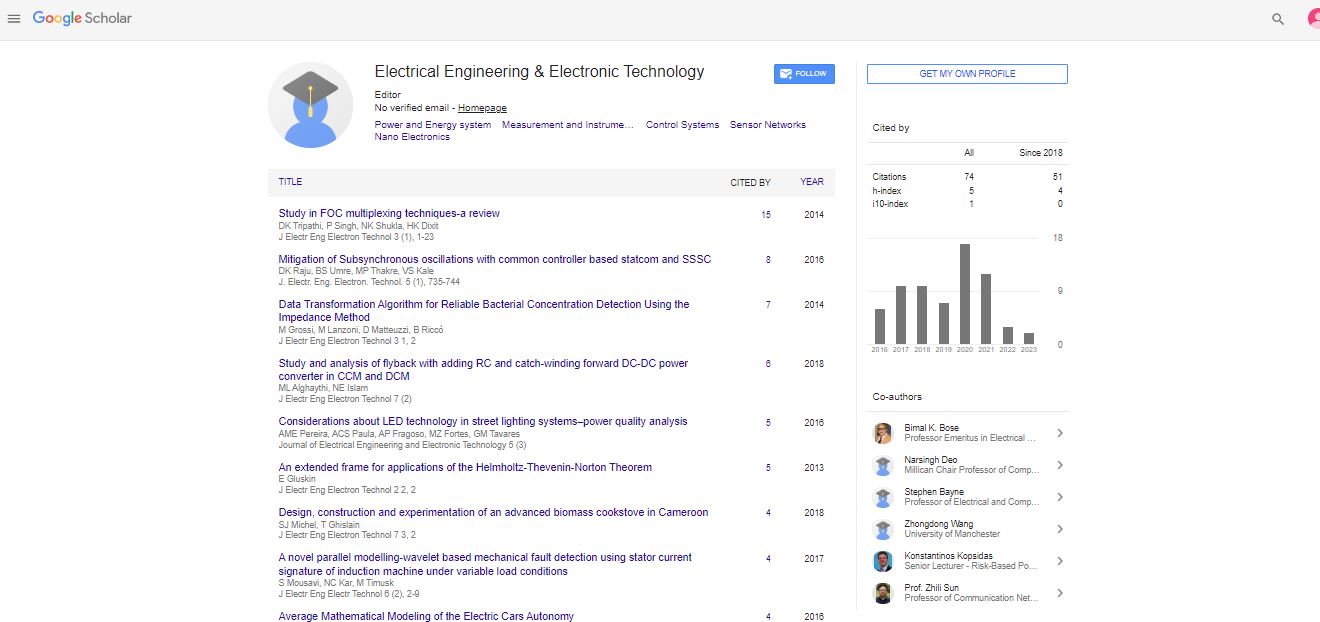Ultra long-discharge-time bio-battery based on bilayer rolled-up enzymatic nano-membrane
Bo Liu
IFW, Germany
: J Electr Eng Electron Technol
Abstract
The development of electronics such as implantable computing, biosensor and medical equipment demands new energy resources which would be utilized in the human body safely and stably with high energy and capacity densities, which is a major challenge for the present battery technology. Glucose, as a natural product, is produced in a huge quantity every year in the plant. In glucose molecule storage high energy could be released by enzymes. Glucose Bio-Fuel Cell (GBFC) produces electricity through catalyzing glucose by enzyme. GBFC is powered by glucose and enzyme. Glucose exists also in animal fluids, such as human blood (Glucose level 6.3 mM and 4.5 L blood). That means we can get energy from our blood. The enormous challenge of GBFC is to improve the power density and discharge time. Because enzymes for this reaction are in vivo enzymes and they are sensitive to pH, temperature and some ions. It is challenge to keep the activity of enzymes out of the cell, to reach high catalysis ability. We designed a new GBFC based on bilayer rolled-up nano-membrane electrode, to ensure a high activity of enzyme and to reach a continuous catalysis of enzyme, to solve the problem in the previous research. We expect a higher power density and ultra long continuous discharge time in the research.
 Spanish
Spanish  Chinese
Chinese  Russian
Russian  German
German  French
French  Japanese
Japanese  Portuguese
Portuguese  Hindi
Hindi 
